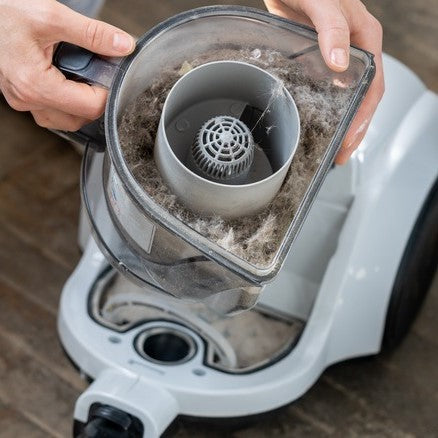You vacuum your house religiously to get rid of all the dust, dirt, and bacteria and make sure your indoor air is up to snuff. But some vacuum cleaners may actually be making things worse, not better. Most vacuum cleaners, regardless of age or price, are a significant source of dangerous ultrafine particles and also help spread toxic bacteria. High-efficiency air purifiers are the only effective defense against tiny ultrafine particles and the effects of vacuuming on indoor air quality. Most vacuum cleaners contribute to indoor air quality problems not just by generating particle pollution but also by spreading bacteria.

Many vacuums not only redistribute ultrafine particles that have settled onto surfaces, but the vacuums generate substantial levels of additional ultrafine particles on their own as a result of using motors with carbon brushes. These tiny particles are small enough to be inhaled and absorbed directly into the bloodstream, and result in increased allergies and asthma, heart attacks, strokes and even cancer. Past studies have shown that vacuum motors generate ultrafine particles containing copper and carbon. Carbon ultrafine particles can irritate allergies and ultrafine carbon particles can be toxic.
Additionally, many vacuum cleaners can also be a problematic source of bacteria emissions. Vacuum cleaner dust bags can trap and hold live bacteria for up to two months. Vacuum emissions include salmonella and other bacteria that have potential to spread infectious or sensitizing aerosols.

Maintaining clean indoor air is crucial for our overall health and well-being. Many of us diligently vacuum our homes to eliminate dust, allergens, and other particles that accumulate on our floors. However, it may come as a surprise to learn that vacuuming can sometimes worsen indoor air quality. Negatives of using an old vacuum, especially without regularly being cleaned can be, but aren’t limited to, the following:
- Stirring Up Dust and Allergens
Vacuuming stirs up a significant amount of dust and allergens that have settled on surfaces, carpets, and upholstery.
- Ineffective Filtration
Over time, filters can become clogged with dirt and debris, reducing their efficiency, and allowing fine particles to escape back into the air. If not replaced or cleaned regularly, the vacuum cleaner may inadvertently become a source of air pollution instead of eliminating it.
- Volatile Organic Compounds (VOCs)
VOCs are harmful chemicals in many household products, such as cleaning agents, paints, and carpets. Vacuuming can agitate these VOCs, causing them to become airborne.
- Mold and Moisture
Vacuuming damp or moist areas like bathrooms or basements can exacerbate indoor air quality issues. Moisture promotes the growth of mold and mildew, and vacuuming in these areas can disturb spores and spread them through the air.

When you clean with the HYLA, the air with dust and other particles enters the HYLA water pan through the inlet tube, creating an upward stream of water – the HYLA Geyser. This effect ensures optimal conditions for filtration by creating a mixture of droplets and dust particles, while the NEW HYLA DEFENDER blades cut larger water droplets into microdroplets and disperse them at high speed. The HYLA EST is extremely capable of reducing and eliminating pollutants within the air in your home, increasing your indoor air quality while reducing need for dirty filters, harsh chemicals, and more.


